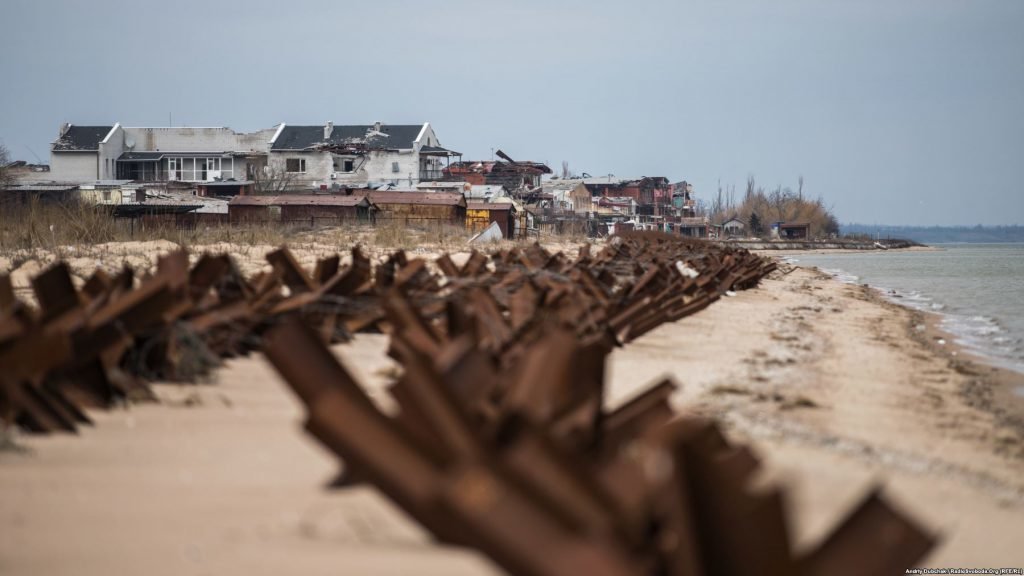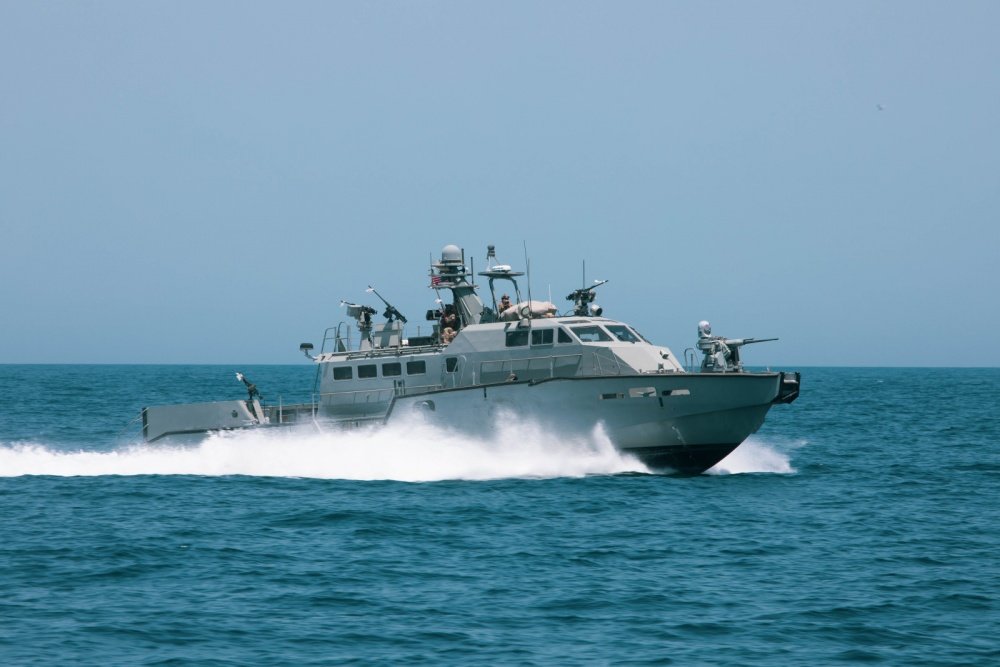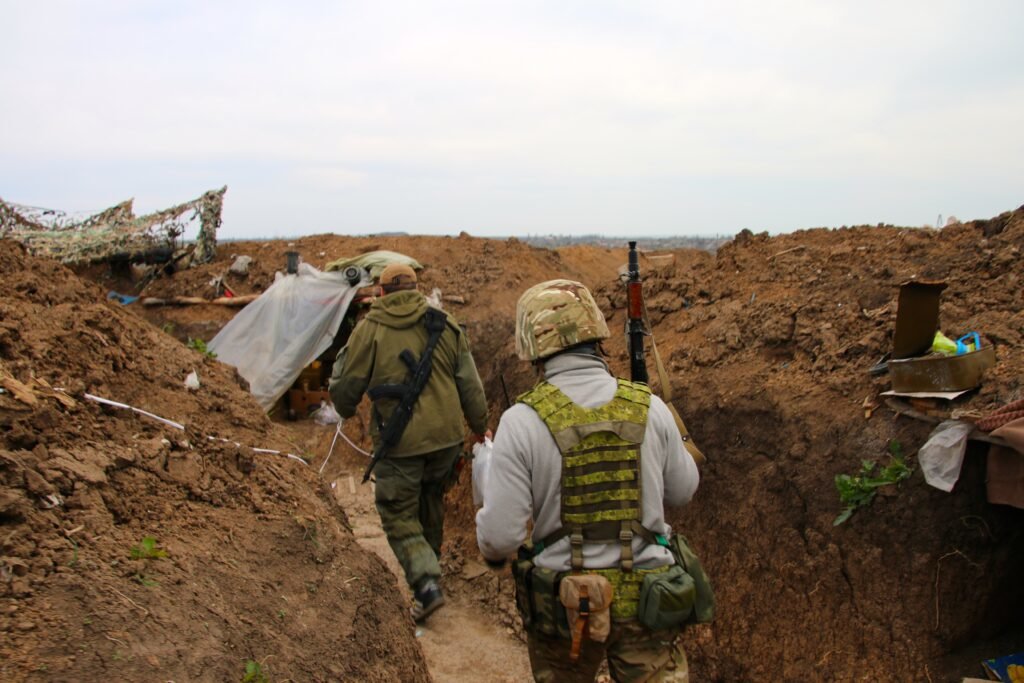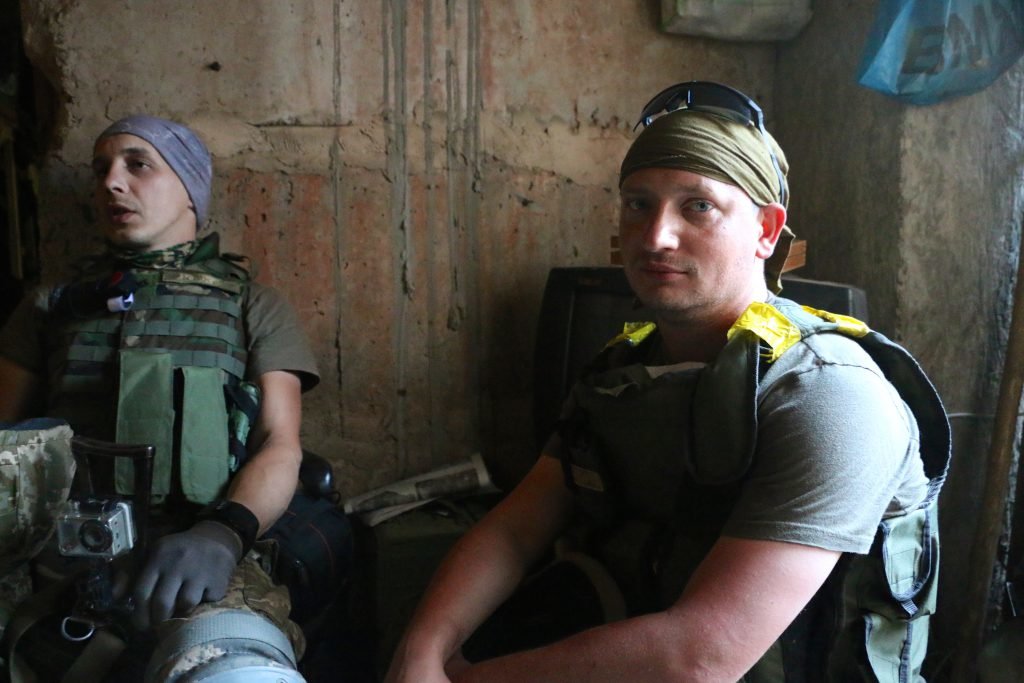Double-Whammy for Moscow: US Delivers Sanctions for Navalny and More Military Aid for Ukraine

Ukrainian soldiers on patrol in the “gray zone” near Lobacheve, Ukraine, in February 2016. Photo by Nolan Peterson.
KYIV, Ukraine — The Pentagon announced a $125 million aid package for Ukraine on Monday, including a commitment to continue lethal weapons deliveries to enable the embattled post-Soviet country “to more effectively defend itself against Russian aggression.”
A day later the Biden administration announced that the US and the European Union would jointly impose sanctions on seven Russian officials over the poisoning of opposition leader Alexei Navalny. The US and the European Union have already levied sanctions on Moscow for its 2014 invasions of Ukrainian territory in Crimea and the Donbas, as well as for the poisoning of a former Russian spy and his daughter in the United Kingdom in March 2018. The US is also reportedly mulling additional sanctions on Moscow for last year’s SolarWinds hack.
Altogether, the dual moves this week by the Biden administration signal a hard line against Moscow’s malign activities, both at home and abroad. It also signals the Biden administration’s desire to increase the pace of Ukraine’s defense reforms and bolster the country’s ever-deepening ties to NATO. To that end, Kyiv must uphold its commitment to enact specific defense sector forms in order to receive an additional $150 million tranche of US military aid at a later date, the Pentagon announced in a statement.
“The administration’s provision of further security assistance for Ukraine confirms President Biden’s stated intention to strengthen Ukraine’s defense capabilities while accelerating defense reforms,” Michael Carpenter, managing director of the Penn Biden Center for Diplomacy and Global Engagement, told Coffee or Die Magazine.
“My sense is that this signals a more hands-on approach to defense transformation going forward,” Carpenter said.

Europe’s only ongoing land war continues in eastern Ukraine. In the country’s embattled Donbas region, Ukrainian forces are enduring their seventh straight winter at war against a combined enemy force of some 30,000 pro-Russian separatists, foreign mercenaries, and Russian regulars.
The forthcoming Pentagon aid marks the Biden administration’s first batch of military assistance for Kyiv under the Ukraine Security Assistance Initiative. The assistance will fund new equipment, training, and advisory operations to “help Ukraine’s forces preserve the country’s territorial integrity, secure its borders, and improve interoperability with NATO.” Notably, the Pentagon aid package includes two armed Mark VI patrol boats. To date, the US has committed eight of the littoral combat vessels to Ukraine.
The Mark VI patrol boat is a modern, fast craft used by the US Navy to defend shallow, nearshore waters. To arm those patrol boats, the US has also previously approved the sale to Ukraine of MSI Seahawk A2 gun systems and MK44 cannons. The inclusion of these armed vessels in the Pentagon aid package continues a Trump-era US policy to provide Ukraine with so-called “lethal defensive weapons.”
In December 2017, the Trump administration approved sending Ukraine Javelin anti-tank missiles. That decision reversed an Obama administration policy to only send Ukraine “non-lethal” hardware.
When Ukraine took possession of its first Javelins in 2018, it was with the caveat that the weapons would remain in storage outside the war zone and not be used in the Donbas conflict under its current conditions. To date, Kyiv has not deployed Javelins to the battlefield against Russian forces. Nevertheless, Ukrainian officials and troops alike praise the Javelin deliveries as a particularly symbolic statement of US support, which helps deter Moscow from future offensives.

Monday’s Pentagon aid package announcement did not list any additional Javelin deliveries to Ukraine — but the statement did include a commitment to continue delivering “defensive lethal weapons,” such as the armed Mark VI patrol boats. Additionally, the Pentagon funds will help to “enhance the lethality, command and control, and situational awareness of Ukraine’s forces” by providing additional systems such as counter-battery radars, satellite imagery and analysis capacities, and equipment for combat medicine and casualty evacuation.
Since the war began in 2014, the US has provided Ukraine with roughly $2 billion in military aid. Among the US equipment provided to Ukraine, counter-battery radars have proved to be particularly useful. Among front-line Ukrainian units using the counter-battery radar systems the US first sent Ukraine in 2015, casualty rates dropped from 47% to about 18%, Ukrainian officials said.
Moreover, some 85% of Ukrainian combat fatalities during the first two years of the war came from artillery fire, not from tanks. For that reason, counter-battery systems, rather than anti-tank missiles, are the real game changers when it comes to increasing the survivability of Ukrainian soldiers.
“Ukraine needs to face Russian tanks in only the worse case scenario. The counter-battery fight with Russian artillery will be the more crucial task,” Mykola Bielieskov, a research fellow at the Ukrainian National Institute for Strategic Studies think tank, told Coffee or Die Magazine.
“To be effective against Russian mortars and [multiple launch rocket systems], we need counter-battery radars,” Bielieskov said.

The war’s operative, Minsk II cease-fire — signed in February 2015 — has effectively frozen the conflict along its current geographical boundaries. By proscribing the use of certain heavy weapons, Minsk II moderates the intensity of combat. But the fighting has never ended. It’s now a long-range battle, marked by daily exchanges of fire from tanks, rockets, artillery, mortars, and small arms.
On Sunday, the day prior to the Pentagon’s aid package announcement, a Ukrainian soldier was killed by Russian shelling in the Donbas. That day, Ukrainian positions came under fire from Russian mortars, grenade launchers, heavy machine guns, and snipers. On Monday, one Ukrainian soldier was wounded in a gun battle, Kyiv reported, and eight more troops were wounded when their vehicle struck an improvised explosive device.
At some places, no man’s land can be several kilometers wide. At others, the Ukrainians and their enemies are close enough to shout insults at one another. Neither side is fighting for a breakthrough or to take new ground. The war is a long-distance artillery standoff in which the opposing camps weather daily shelling from within their trenches.
For Moscow, the war is a means to destabilize Ukraine and forestall the country’s Western pivot. However, the war also kick-started Ukraine’s top-to-bottom political, economic, and cultural divorce from Russia. Most notably, Ukraine’s strategic military doctrine now identifies Russia — the country’s former Soviet ally — as its top security threat. Kyiv is consequently rebuilding its armed forces with the specific objectives of defending against a Russian invasion and adopting NATO standards.

Ukraine possessed only 6,000 combat-ready soldiers when the war began in April 2014. While fighting the war, Ukraine has since rebuilt its military into the second largest in Europe, in terms of manpower, comprising about 250,000 active-duty troops and 80,000 reservists. Ukraine now operates more tanks than France, the United Kingdom, and Germany combined. On the European continent, only Russia’s military is bigger than Ukraine’s in terms of total manpower and hardware.
Nevertheless, much of Ukraine’s arsenal dates from the Cold War. And for years Ukraine had focused on meeting the immediate needs of the land war in the Donbas. But now, with the modern Russian threat in mind, Ukraine is slowly modernizing its forces — and rebuilding its air force and navy, too.
In 2018, Russian naval forces stepped up their harassment of Ukrainian merchant vessels in the Sea of Azov. The war, which had once been quarantined to the Donbas battlefields, subsequently expanded to a new maritime domain. However, Russia’s 2014 takeover of Ukraine’s Crimean peninsula left 80% of Ukraine’s navy in Russian hands. So, rather than replacing the blue-water warships lost in Crimea, Ukrainian military leaders have prioritized the creation of a “mosquito fleet” of littoral craft, armed with advanced anti-ship weapons.
To that end, the eight pledged US Mark VI patrol boats are a boon to Ukraine’s naval reconstitution.
“We have threats not only on land but from sea,” said Bielieskov, the Ukrainian research fellow. He added: “In some regard those threats coming from sea are more dangerous than from land, since we have a practically non-existent navy. We desperately need those Mark VI boats.”
Read Next:

BRCC and Bad Moon Print Press team up for an exclusive, limited-edition T-shirt design!
BRCC partners with Team Room Design for an exclusive T-shirt release!
Thirty Seconds Out has partnered with BRCC for an exclusive shirt design invoking the God of Winter.
Lucas O'Hara of Grizzly Forge has teamed up with BRCC for a badass, exclusive Shirt Club T-shirt design featuring his most popular knife and tiomahawk.
Coffee or Die sits down with one of the graphic designers behind Black Rifle Coffee's signature look and vibe.
Biden will award the Medal of Honor to a Vietnam War Army helicopter pilot who risked his life to save a reconnaissance team from almost certain death.
Ever wonder how much Jack Mandaville would f*ck sh*t up if he went back in time? The American Revolution didn't even see him coming.
A nearly 200-year-old West Point time capsule that at first appeared to yield little more than dust contains hidden treasure, the US Military Academy said.












